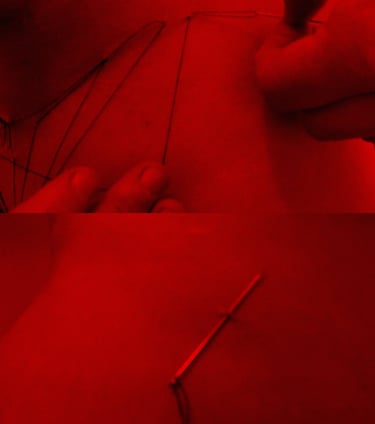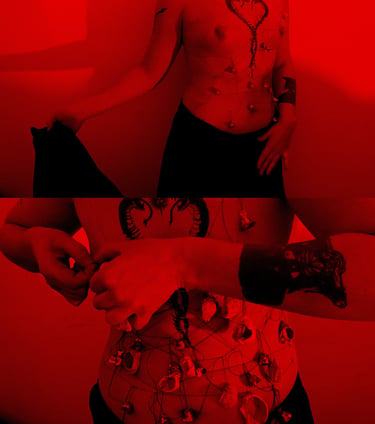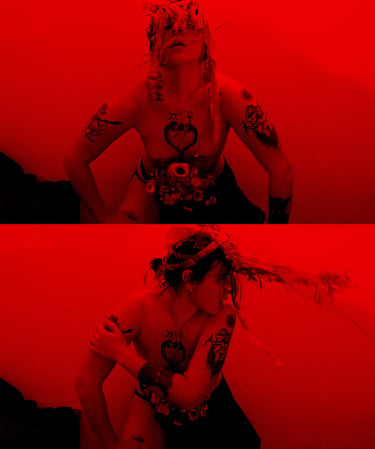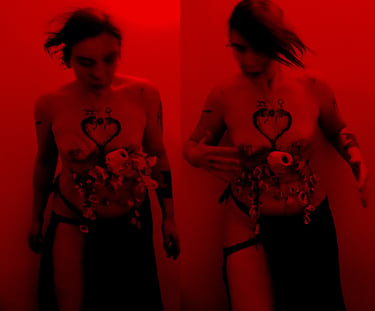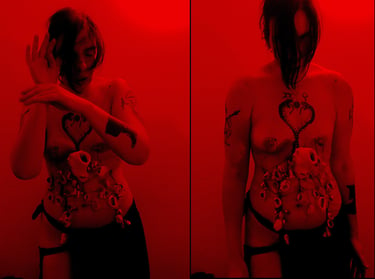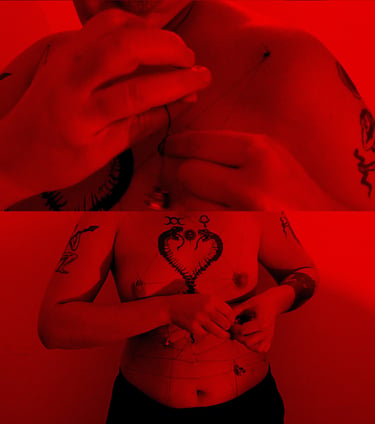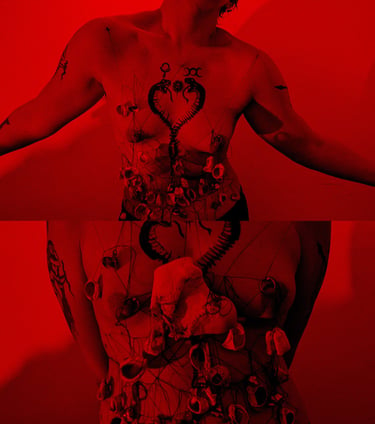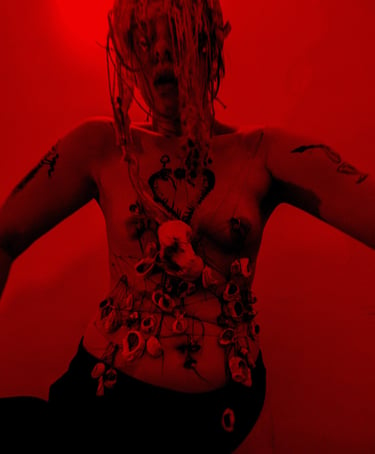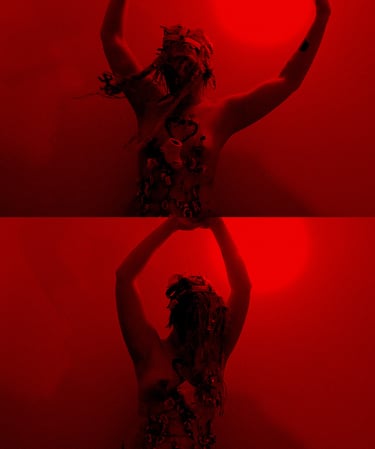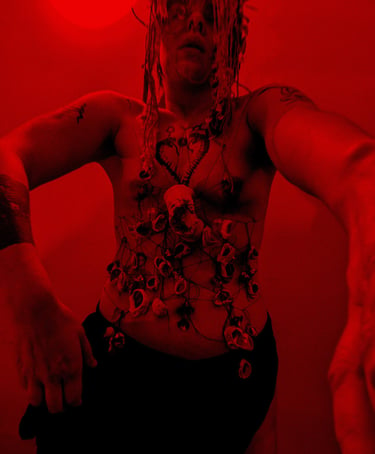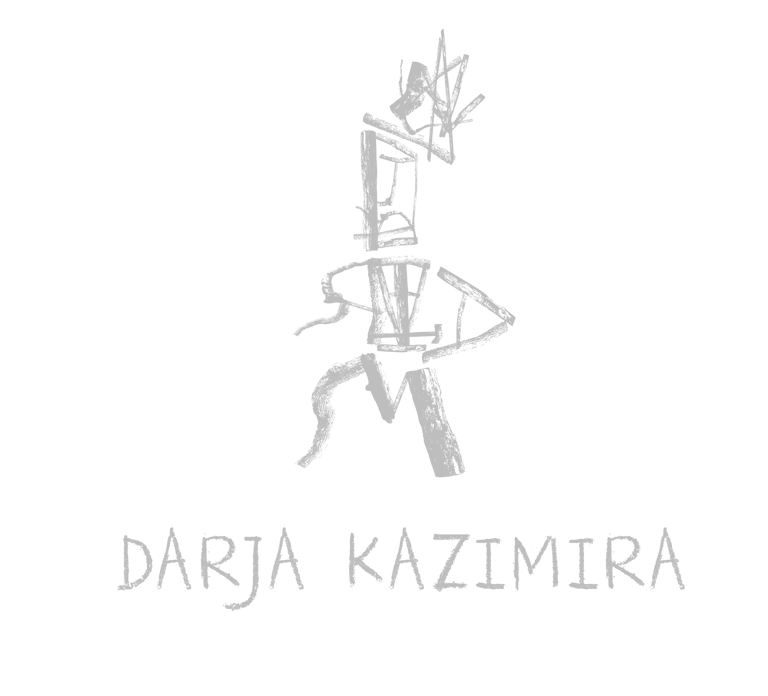
Embroidery of percussion for Enaree. Part I
The basis of this project is the bodily practice of self-embroidery.
"Embroidery of percussion for Enaree" meant the creation of heavy percussion sewn to the skin on the body, consisting of metal elements, Black Sea shells, and bones. This practice is considered here as an ecstatic, trance technique and the process of transforming the body into a sacred object that exudes sound and pain at the same time.
The central object of this fantasy, in which percussion is implanted, are the Scythian shamans-Enaree. As far as we know from the written heritage of Herodotus, the distinctive feature of these shamans were "transgenderism", "hermaphroditism", which were considered by the historian as a special disease that endows these people with sacred properties.
However, modern ethnography emphasizes the prevalence of this distinctive feature among shamanic traditions of different peoples of the world, that exist in other contexts. As anthropologist Maria Antonina Czaplicka very correctly notes, the shaman in this cultures does not make a transition to another gender, but unites them, like the three worlds that he regularly touches. And thus, the borderline state of the shaman's gender identity is not a desire to be the third sex, but to embody the third kind of human being fully integrated into transcendent processes, manifesting homogeneity and identity with the cosmogonic context with its physicality. This path is nothing but a deformation of the "primary" body, which in turn is an integral part of the concept of the sacred double as the center of shamanic practices.
Percussion sewn to the body becomes the same whole with it, contributing to deformation and accompanies with its presence every movement of the shaman's figure, as an independent rhythmic instrument and means of destroying the normativity of physicality through regular communication with pain, which is constantly present due to the weight of the structure and its fastening system.
